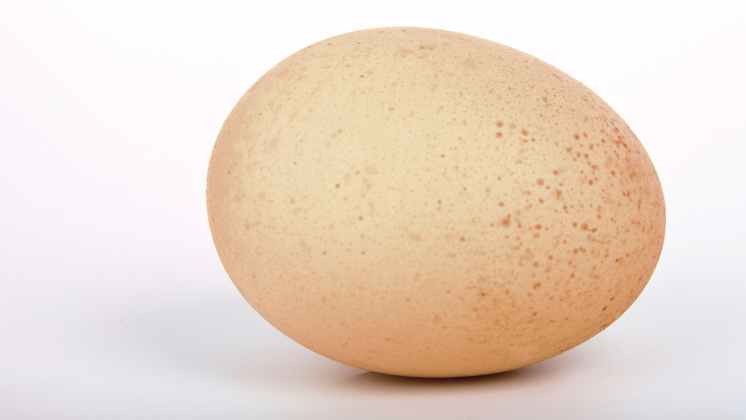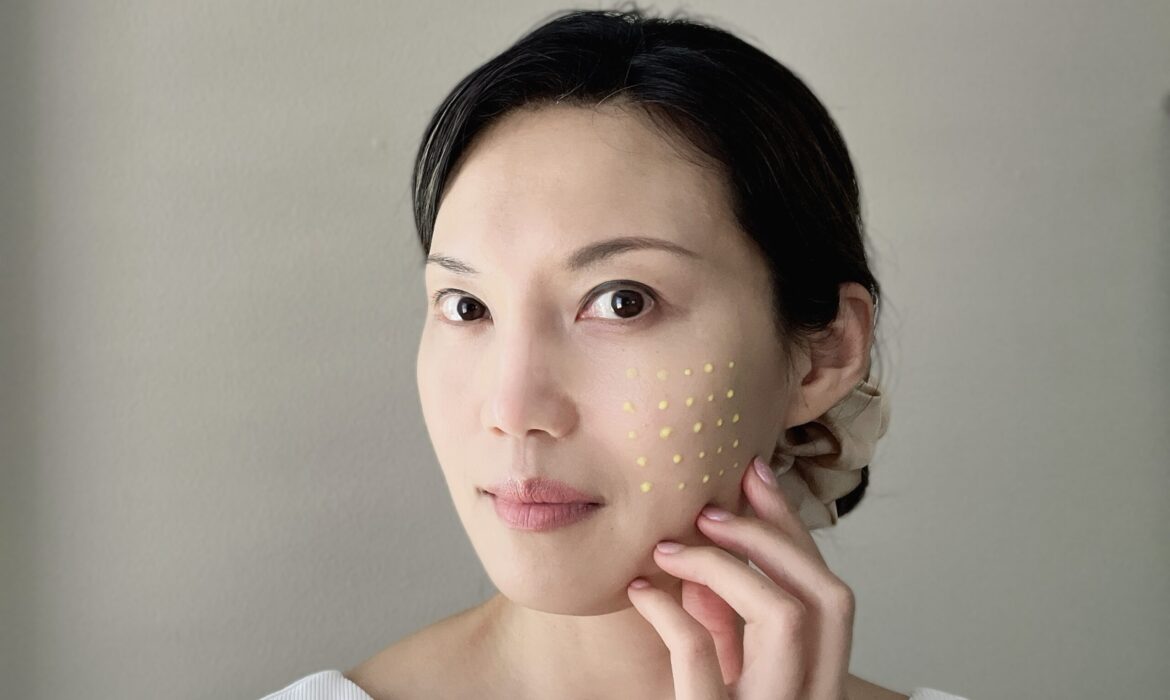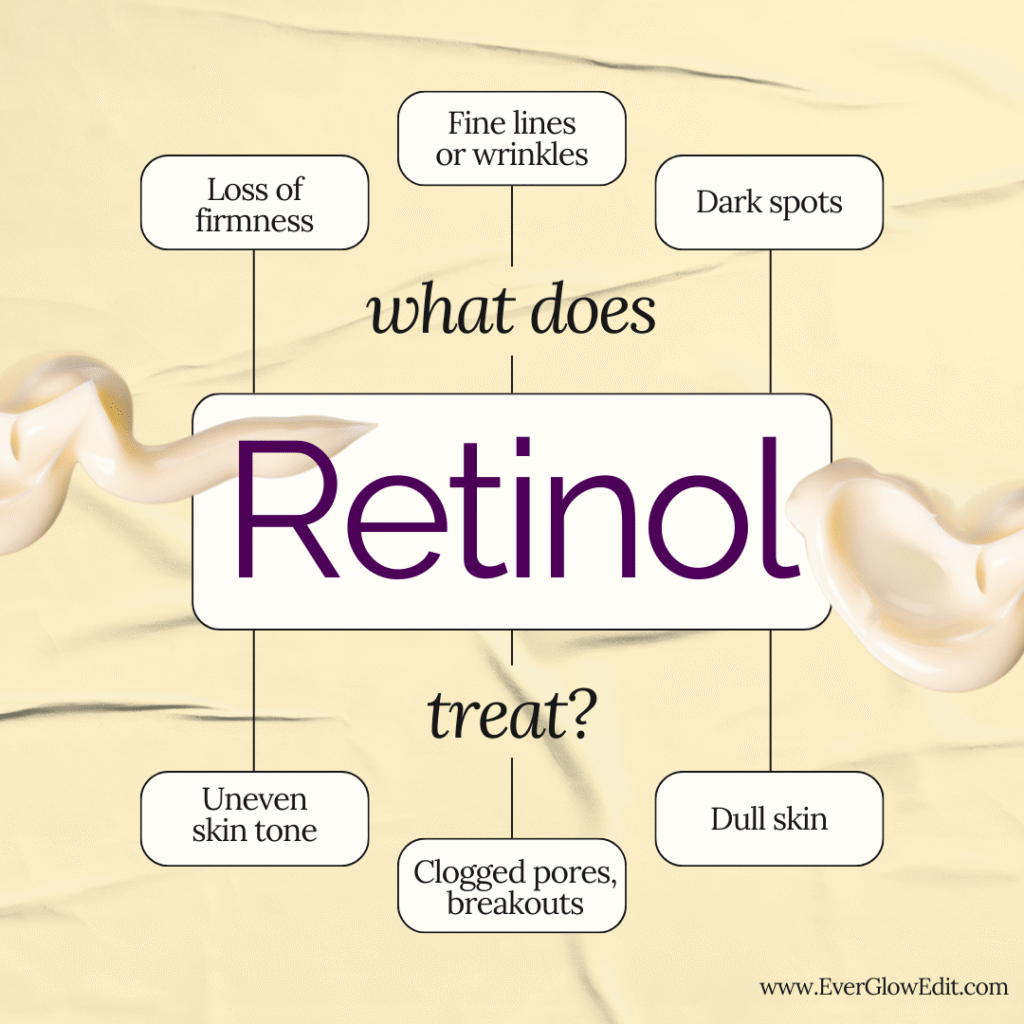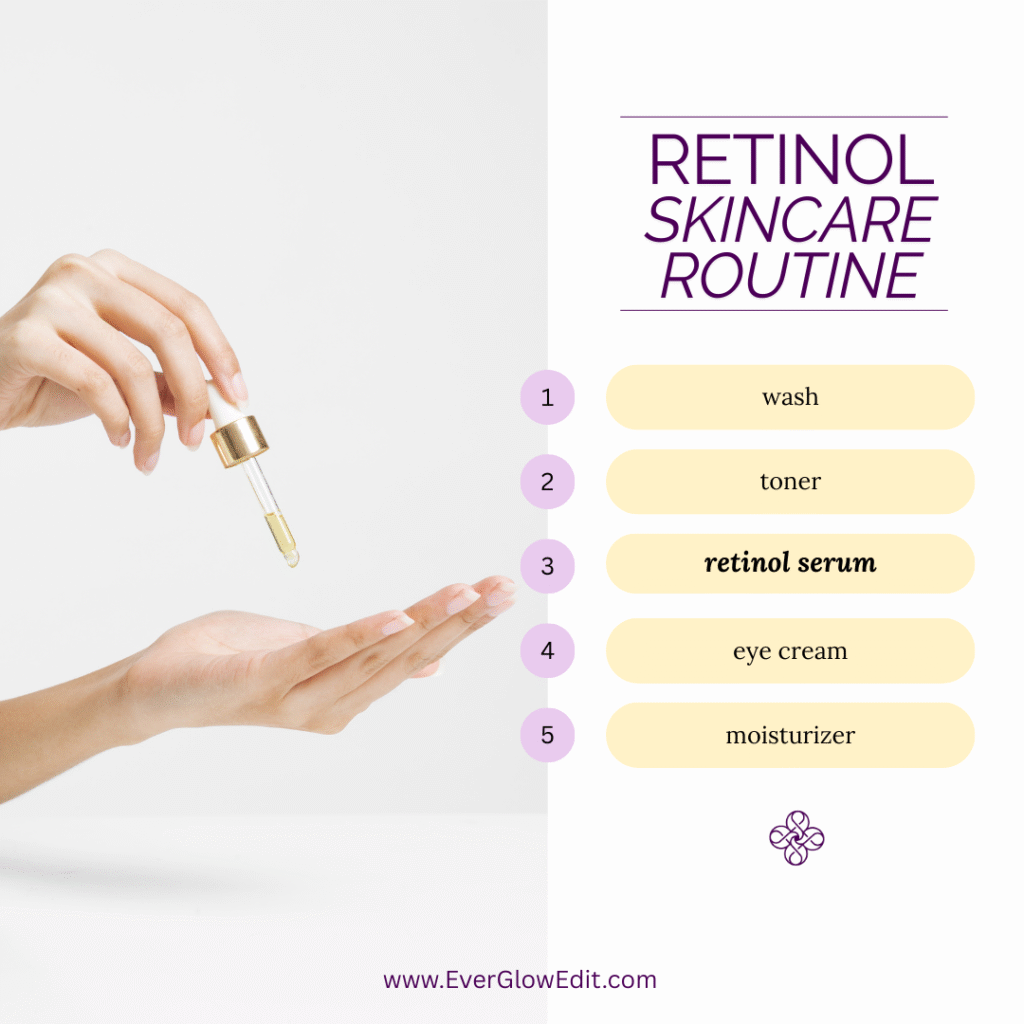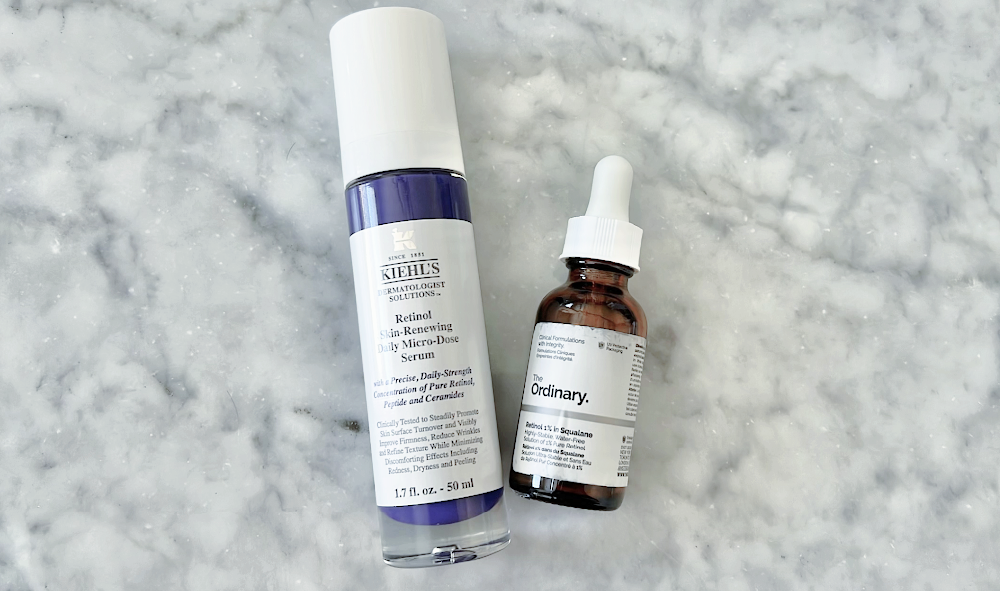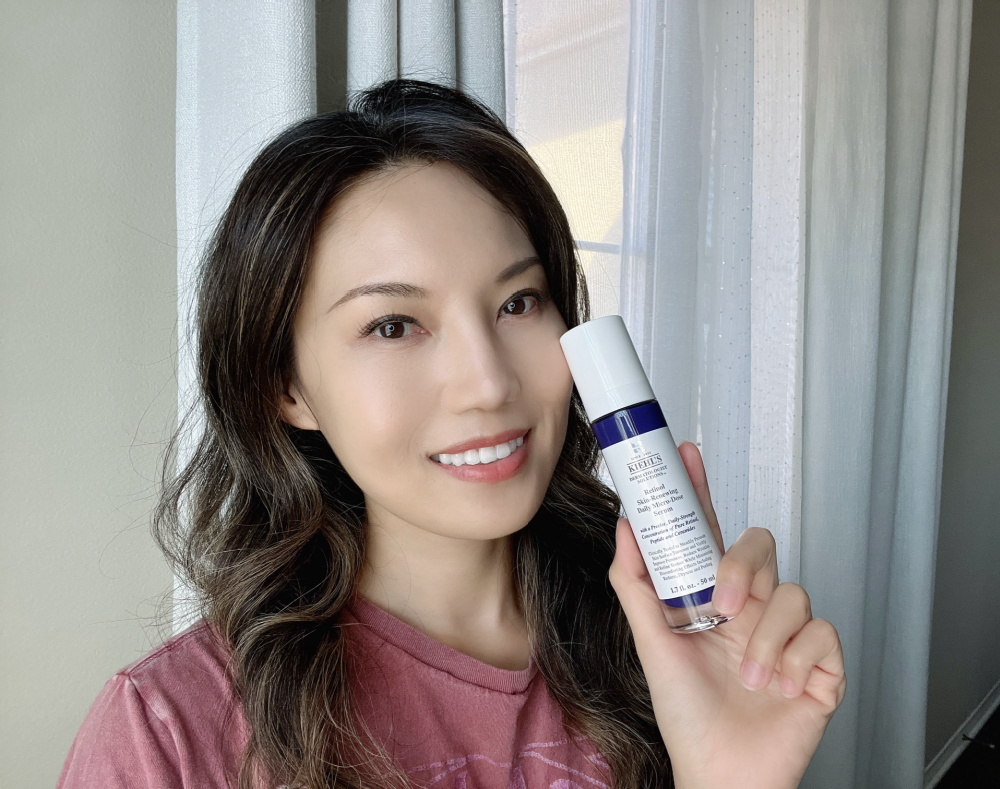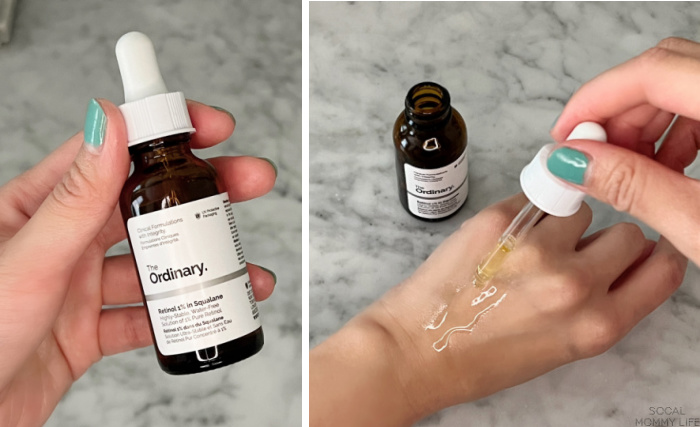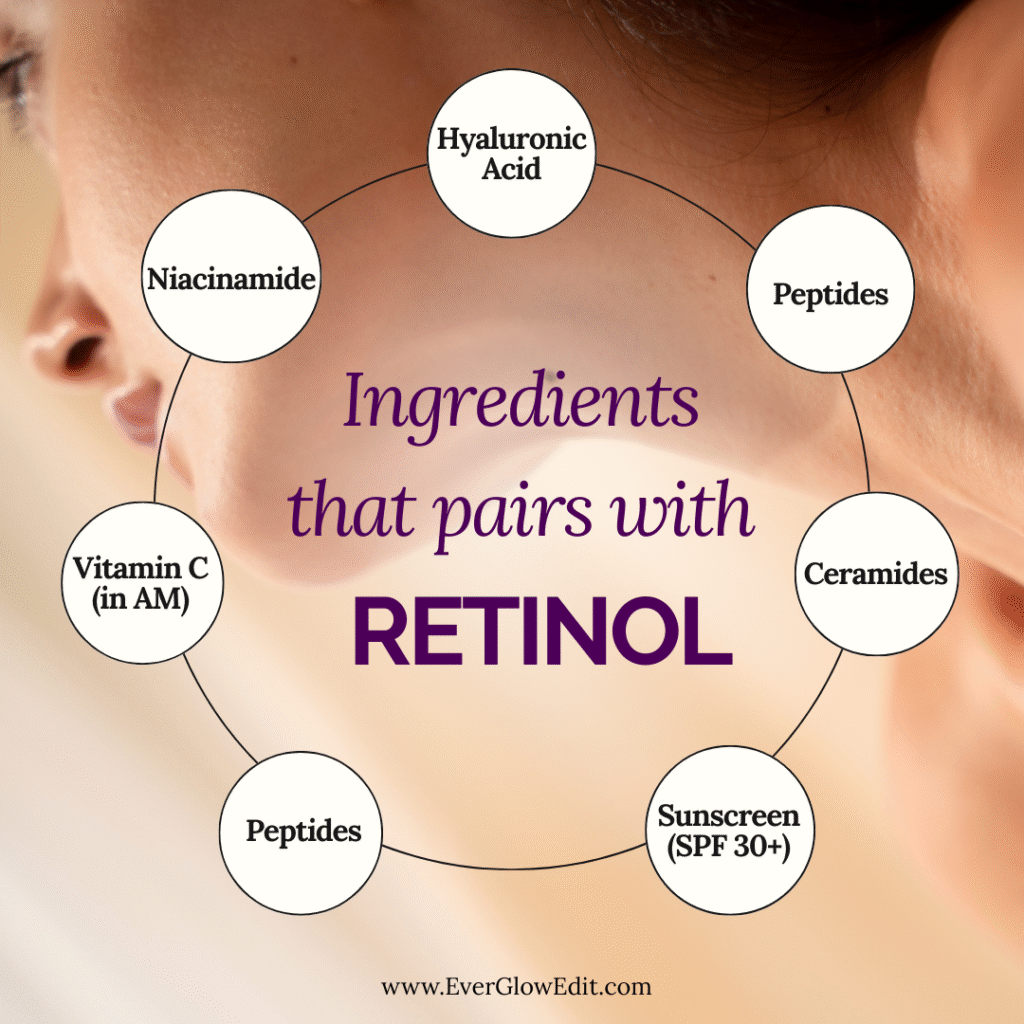Dark spots, melasma, freckles that get darker, or those pesky marks left behind after a breakout — if you’re in your late 30s or beyond, chances are you’ve dealt with at least one of these.
As an Asian woman living in sunny Southern California, I can tell you firsthand that hyperpigmentation is basically my skin’s love language — and not in a cute way. Add in the natural aging process, hormone shifts, and years of UV exposure, and those spots can feel like they multiply overnight.
Here’s the good news: hyperpigmentation can be treated and managed with the right ingredients, consistency, and a little patience.
In this guide, we’ll break down:
- What hyperpigmentation really is
- Why it happens (and what makes it worse)
- The science-backed ingredients that work
- My tried-and-true product recommendations
- A step-by-step routine to even out skin tone
By the end, you’ll know exactly how to build a skincare routine that helps fade dark spots without overwhelming your skin barrier.
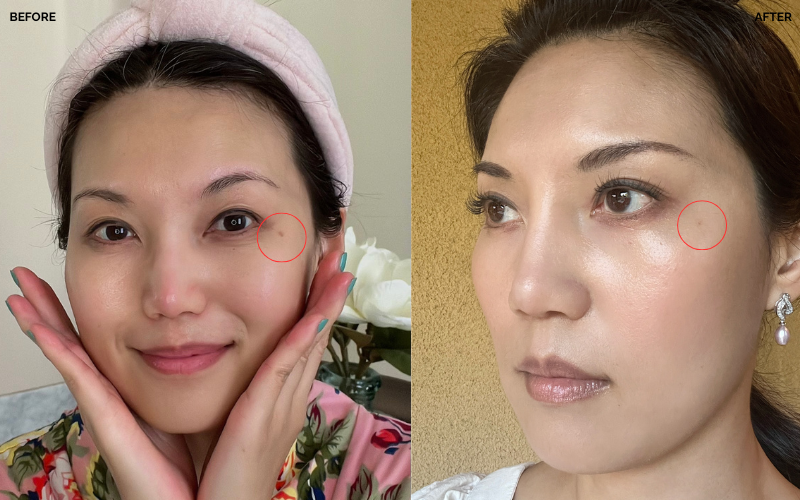
This post may contain affiliate links. Please read disclosure.
What Is Hyperpigmentation, Really?
In plain terms, hyperpigmentation is when your skin makes too much melanin — the pigment that gives your skin its color. When your melanocytes (melanin-producing cells) go into overdrive because of sun, hormones, or inflammation, you end up with darker patches or spots compared to the rest of your skin.
Common Types You Might See
- Post-Inflammatory Hyperpigmentation (PIH): Those dark marks left behind after acne, eczema, or even a bug bite.
- Freckles: Often genetic, but they darken and multiply with sun exposure.
- Age Spots (a.k.a. Sun Spots): Usually pop up in your 30s–40s from years of accumulated sun damage, often on your face, chest, and hands.
- Melasma: Larger, patchy discoloration usually tied to hormones + UV exposure.
Different names, same root cause: excess melanin production.
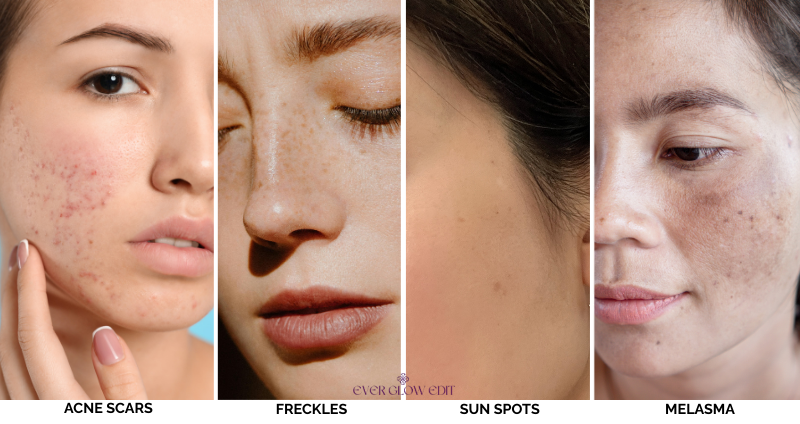
What Causes Dark Spots and Uneven Skin Tone?
Hyperpigmentation is a team effort — and not the good kind. Here are the biggest triggers:
- UV Exposure: The #1 culprit. Even with daily SPF, years of incidental exposure add up. Research shows UV radiation is the top environmental factor in pigmentation disorders (Grimes, 2009).
- Hormones: Estrogen and progesterone fluctuations (hello pregnancy, menopause, or birth control) can trigger melasma.
- Inflammation: Pimples, eczema, or even picking at your skin can leave long-lasting marks.
- Genetics: Some skin types (especially Asian and deeper tones) are naturally more prone.
- Medications: Certain antibiotics, NSAIDs, chemotherapy drugs, or hormones can worsen pigmentation.
The good news? You can’t control everything, but you can control your sun protection and the brightening ingredients you use. If you’re in your 40s and figuring out how to balance anti-aging and pigmentation care, check out my post on The Best Skincare Routine for Your 40s.
The Hero Ingredients for Hyperpigmentation Treatment
Let’s talk solutions. These are the science-backed actives dermatologists (and I) love for fading dark spots.
Azelaic Acid
- Who it’s for: Sensitive skin, melasma, or post-acne marks.
- How it works: Inhibits melanin and reduces inflammation (Draelos, 2007).
- Why it’s great: Multi-tasker — brightens, calms acne, reduces redness.
- When to use: Morning & night. Stable and gentle.
Tranexamic Acid
- Who it’s for: Stubborn melasma or pigmentation that resists other treatments.
- How it works: Blocks pathways that trigger melanin (Na et al., 2013).
- Why it’s great: Often works when other brighteners plateau.
- When to use: Both AM & PM — it’s gentle and non-photosensitizing.
Arbutin
- Who it’s for: Anyone who wants a gentler alternative to hydroquinone.
- How it works: A hydroquinone derivative that lightly inhibits melanin.
- Why it’s great: Effective yet less irritating.
- When to use: Both AM & PM. Safe and gentle enough for daily use.
Retinoids (Retinol, Tretinoin)
- Who it’s for: Over 35, battling pigmentation + aging (wrinkles, firmness).
- How it works: Speeds up cell turnover so pigmented cells shed faster. Prescription tretinoin is the gold standard (Kang et al., 2001).
- Why it’s great: Dual benefit — smoother texture + fewer wrinkles.
- When to use: Night only. Retinoids are deactivated by UV and increase photosensitivity.
Curious about starting retinol? Don’t miss my Ultimate Guide to Retinol so you know exactly how to use it.
Kojic Acid & Licorice Root
- Who it’s for: Anyone who wants natural, plant-based brighteners.
- How they work: Inhibit tyrosinase (the enzyme behind melanin production)
- Why they’re great: Work well when paired with other actives.
- When to use: AM or PM, but always pair with SPF.
Products I Recommend (and Actually Use)
When it comes to fading dark spots and evening out skin tone, not all brightening products are created equal. The science — and my own skin — has taught me that the best results come from combining multiple actives that target different parts of the pigmentation pathway.
But here’s the thing: I don’t want to layer three different serums every night. I want smart, multi-tasking formulas that deliver results without overwhelming my skin barrier (or my budget).
These are the best products for dark spots I’ve personally purchased, tested, and used in my own routine. No sponsorships, no freebies — just real results.
Paula’s Choice 10% Azelaic Acid Booster
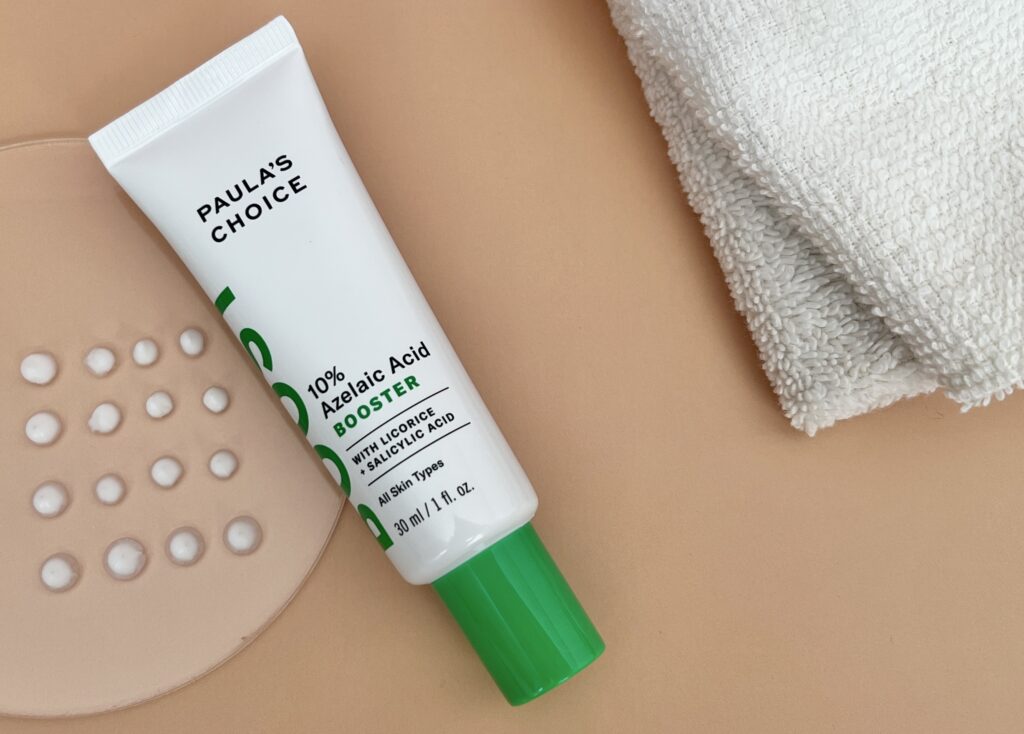
Why I Love It: Azelaic acid is one of my go-to actives for pigmentation. It works by calming inflammation, fading discoloration, and even helping to prevent acne breakouts
Supporting Ingredients: Licorice root adds an extra brightening boost, while salicylic acid provides gentle exfoliation to help the actives penetrate better.
Texture & How I Use It: The texture is paste-like, so it’s not something I slather all over. Instead, I use it as a spot treatment on stubborn marks.
My Experience: I have this sunspot that had been hanging out on my cheek for over ten years. I tried laser and it came back. Within a month of consistent use of this azelaic acid booster, it finally started to fade. Now, whenever a new dark spot pops up, I dab this on — and it works wonders. Plus, the salicylic acid makes it a perfect choice for fading old acne scars.

Naturium Tranexamic Acid 5% Serum
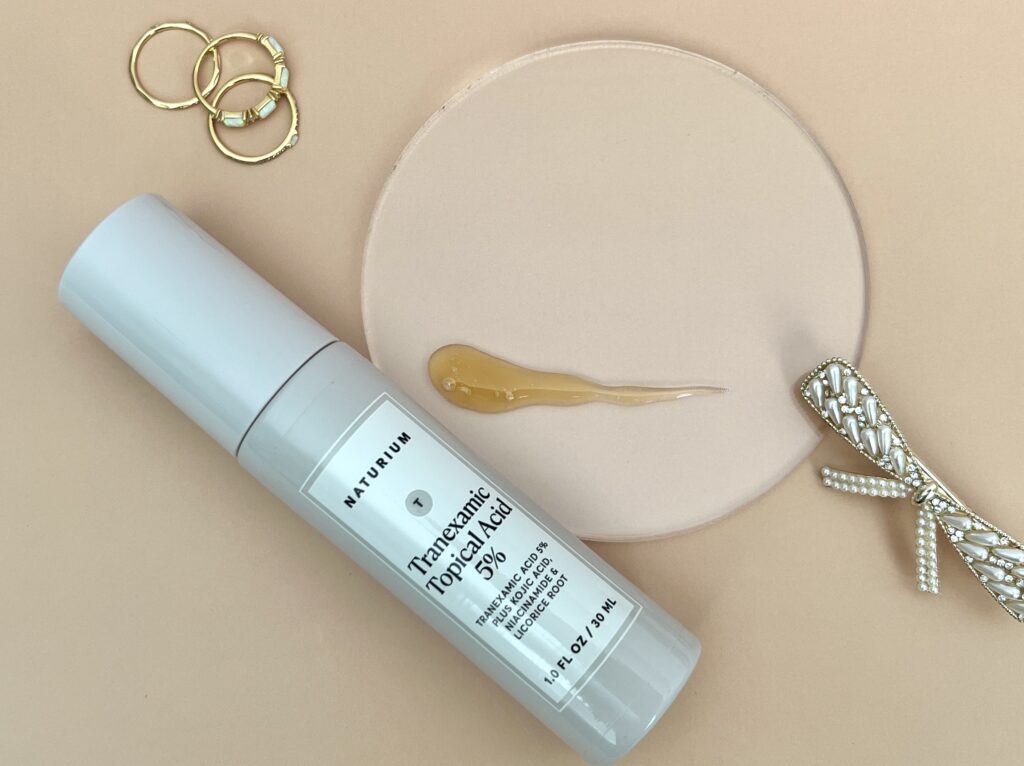
Why I Love It: Tranexamic acid is like the secret weapon for melasma and stubborn pigmentation. It works by blocking the pathways that trigger excess melanin production (Na et al., 2013).
Supporting Ingredients: This formula includes kojic acid, licorice root, and niacinamide — all proven brighteners that play well together. In fact, a study found that the combination of tranexamic acid, niacinamide, and licorice root was highly effective for facial pigment lightening (Draelos et al., 2023).
Texture & How I Use It: Lightweight and serum-like, it sinks in quickly. I apply it all over my face right after cleansing.
My Experience: Last summer, I got really tan. Normally it takes me months to get back to my natural tone, but this serum sped up the process dramatically. It’s now one of my favorite all-over face brighteners.

Tosowoong Arbutin 7% + Tranexamic Acid 4% Cream
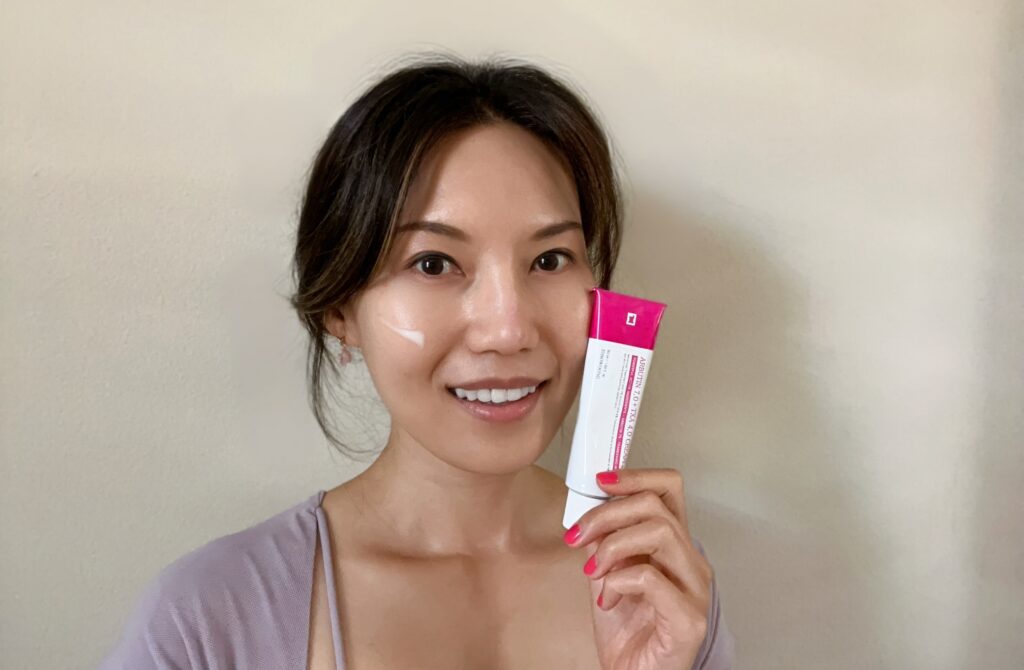
Why I Love It: Arbutin is one of the gentlest yet most effective brightening ingredients you’ll find — no wonder it’s so popular in Asian skincare. It works by gently inhibiting melanin production, making it effective but far less irritating than hydroquinone.
Supporting Ingredients: Paired with tranexamic acid, this cream brings double pigment-fighting power in a soothing base.
Texture & How I Use It: Creamy, nourishing, and perfect for dry or sensitive skin. I like to use it before moisturizer and SPF in the morning, and again at night.
My Experience: Because it spreads so easily, I only need a small amount. With consistent use twice a day, I noticed my skin tone looked more even and my dry patches felt calmer. This is a great choice if you’re looking for a gentle brightening routine for sensitive skin

Olay Retinol 24 Max Night Moisturizer
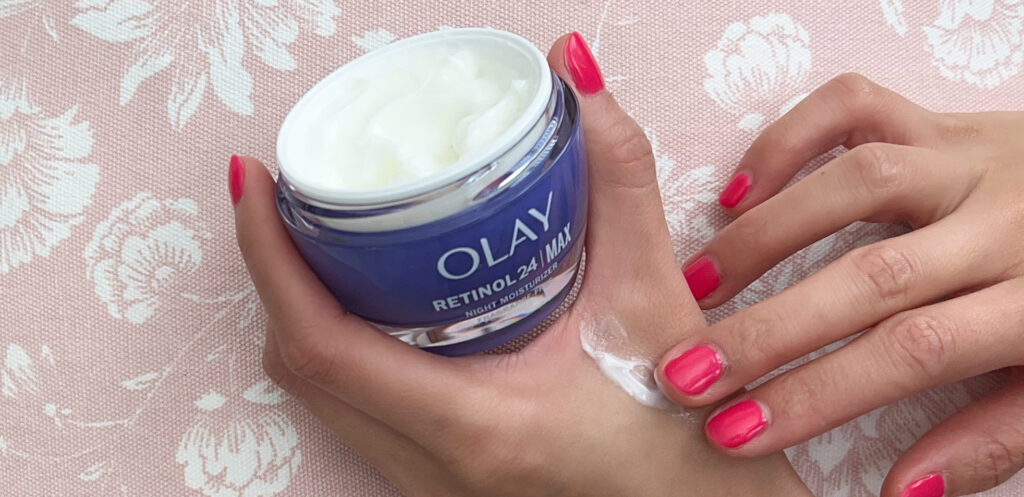
Why I Love It: Retinol has long been considered the gold standard for anti-aging and pigmentation (Kang et al., 2001). It speeds up cell turnover, helping pigmented cells shed faster while also boosting collagen production.
Supporting Ingredients: This formula pairs retinol with peptides (for firmness) and niacinamide (for soothing and brightening). Honestly, peptides and niacinamide are retinol’s BFFs — they make the formula more effective and less irritating.
Texture & How I Use It: Creamy but not greasy, which makes it easy to use nightly. And yes, I take it all the way down my neck.
My Experience: Not only did my skin tone got brighter but it felt smoother, firmer skin over time. If you’re new to retinol, start slow: once a week, then gradually build up. Check out the ultimate guide to retinol to learn how to start and avoid common mistakes.

How to fade dark spots on face: the routine that works
Here’s how I combine these products without overdoing it:
Morning (AM)
- Gentle cleanse
- Treatment serum: Alternate Naturium Tranexamic Acid and Tosowoong Cream
- SPF moisturizer: I love La Roche-Posay Double Repair Moisturizer SPF 30
RELATED POST: Morning skincare routine for dry skin: Simple Steps for a Radiant Glow
Evening (PM)
- Double cleanse (if wearing makeup)
- Treatment serum: Alternate Naturium Tranexamic Acid or Tosowoong Cream
- Spot treatment: Paula’s Choice Azelaic Acid on specific marks
- Moisturizer: Olay Retinol 24 Max Night Moisturizer (swap with a gentle night cream on azelaic nights)
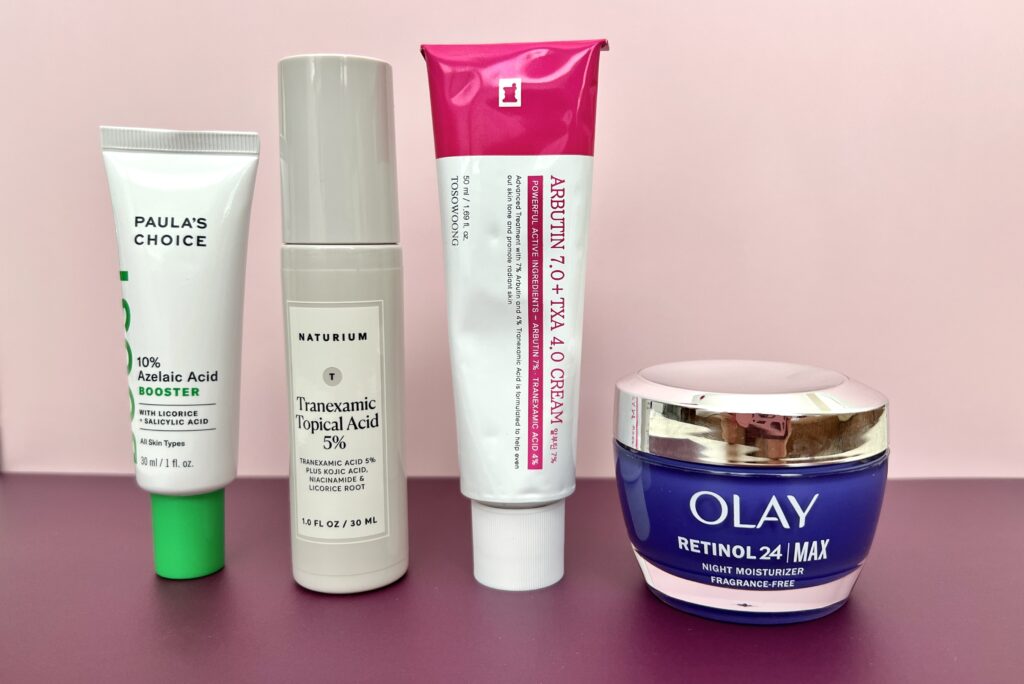
If you want to give any of these skin brigheners a try, remember to start slow. Introduce one new active at a time, and always patch test.
FAQs About Fading Dark Spots
How long does it take for dark spots to fade?
A: Typically 8–12 weeks of consistent use. Patience is key — pigmentation didn’t form overnight, and it won’t fade overnight either.
Can I combine multiple brightening ingredients?
A: Yes — in fact, it’s more effective. But layer slowly and introduce one at a time to avoid irritation. All of the active ingredients mentioned above can be used together with the exception of retinol. Other strong exfoliants like AHAs (Glycolic Acid, Lactic Acid), BHAs (Salicylic Acid), and Benzoyl Peroxide should be avoided with retinol.
Do I need prescription treatments?
A: Not always. OTC ingredients like azelaic acid, arbutin, and tranexamic acid can work wonders. For stubborn melasma, dermatologists may prescribe hydroquinone or tretinoin. Keep in mind that prescription treatments are more powerful and tend to have more side effects.
What about in-office procedures?
A: Chemical peels, laser treatments, and microneedling can help, but they’re best done under dermatologist’s guidance. They work faster but come with higher risks and costs.
Will my dark spots come back?
A: Without consistent SPF and maintenance, yes. Think of fading pigmentation as an ongoing skincare lifestyle, not a one-and-done fix.
Final Thoughts on how to fade dark spots on face
Hyperpigmentation can be stubborn, but with smart ingredients, consistent SPF, and a routine you can actually stick to, your skin can get brighter and more even.
As someone who’s battled spots through SoCal sunshine and 40-something hormones, I can promise you — it’s possible.
Want to keep the glow going? Check out my posts on Best Skincare Routine for Your 40s and Wellness Tips for Moms for lifestyle habits that keep your skin radiant from the inside out.
References
- Grimes PE. Melasma: Etiologic and therapeutic considerations. Arch Dermatol. 2009.
- Draelos ZD. The efficacy of azelaic acid in melasma and postinflammatory hyperpigmentation. J Am Acad Dermatol. 2007.
- Na JI, et al. Tranexamic acid for melasma: A review and update. Ann Dermatol. 2013.
- Kang S, et al. Tretinoin and the treatment of photoaging: A decade of experience. J Am Acad Dermatol. 2001.

